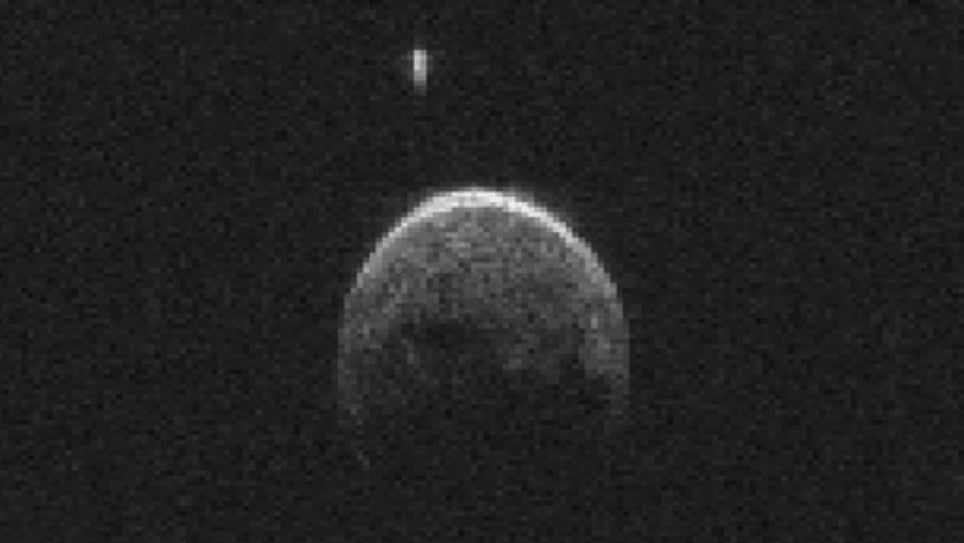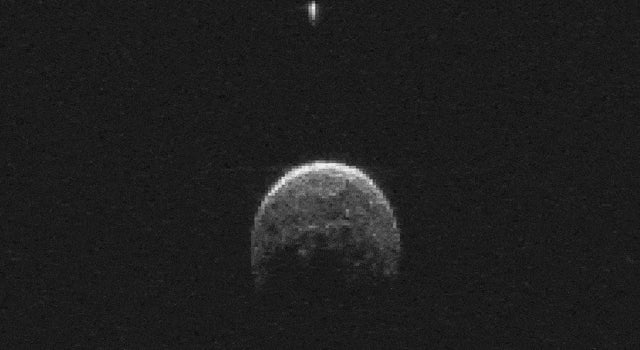The asteroid that flew by Earth yesterday has its own moon
Yesterday, the mountain-sized asteroid 2004 BL86 zipped right by Earth—the closest that one of that size will come to us until 2027. Today, NASA released radar images it took of the flying space rock, which revealed that another (smaller) flying space rock is orbiting it: Its very own moon.


Yesterday, the mountain-sized asteroid 2004 BL86 zipped right by Earth—the closest that one of that size will come to us until 2027. Today, NASA released radar images it took of the flying space rock, which revealed that another (smaller) flying space rock is orbiting it: Its very own moon.
The radar images taken at Goldstone Observatory in California show a small mass—about 230 feet across–orbiting BL86. The main asteroid itself was measured at 1,100 feet in diameter. While it’s not unprecedented for an asteroid to have its own natural orbiting satellite—or moon—it’s still a relatively rare occurrence. NASA says that 16% of asteroids 655 feet or larger have a moon (or two).

What’s even more rare is getting such precise radar imaging of an asteroid and its moon. BL86 flew close enough to Earth (745,000 miles away, or three times the distance to our moon) that the images are quite detailed, even though they appear blurry and and grainy.
The images are created essentially by using a giant antenna to shoot radio waves many, many miles into space at the asteroid, and then waiting for the data to bounce back to Earth. So you’ll have to forgive NASA if they aren’t HD quality.
But if you want incredible close-up images of a comet, we’ve got you covered.
Here’s a video from NASA describing the radar images of BL86 and its satellite: